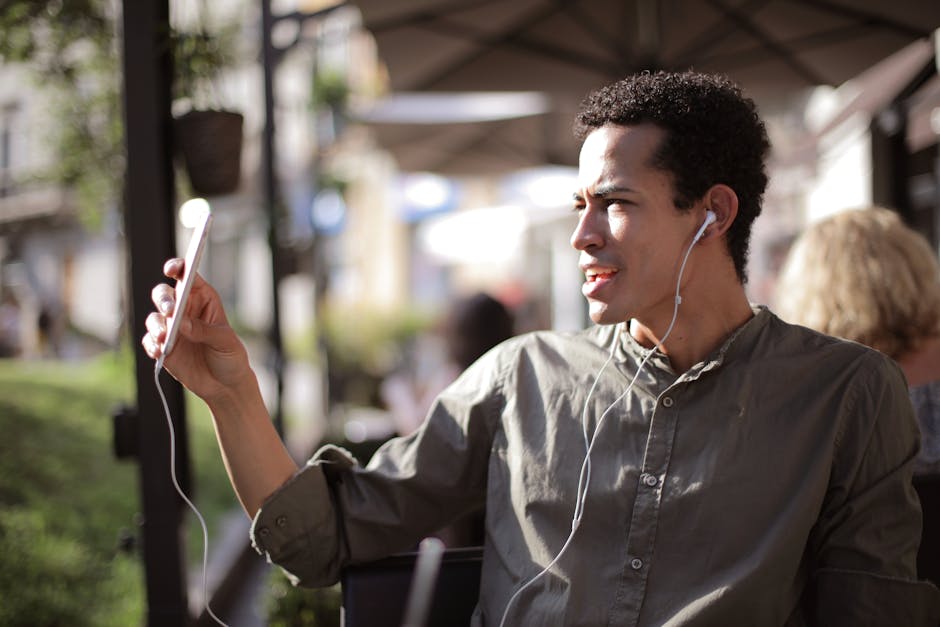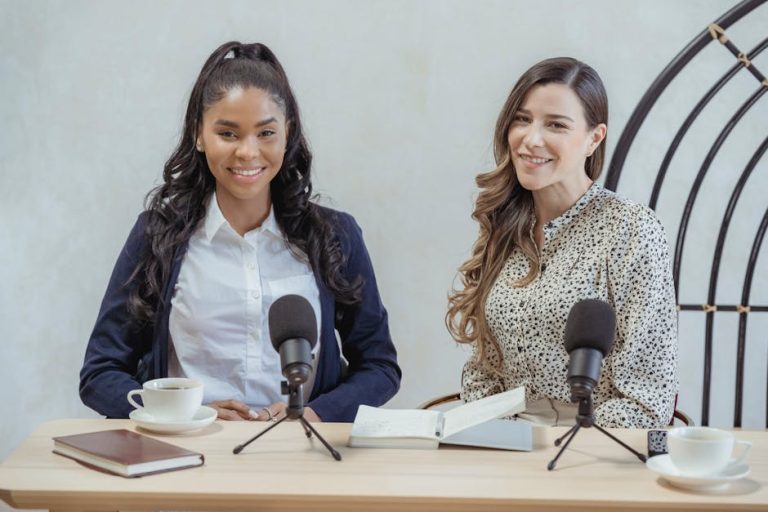It’s 2025 now, and folks are still talking about whether YouTube, that big video site, is actually social media. Like, really, it’s one of those questions that just keeps popping up, probably because it sits in this weird spot between just watching stuff and actually talking to people online. You use it a lot, I bet, for all sorts of things, and so do a whole bunch of other people around the globe.
Some folks, they just see it as a place to watch clips, or maybe some how-to guides, or just to catch up on what their favorite creators are making. But then, other people, they really treat it more like, say, Instagram or Facebook, where there’s a back-and-forth going on and connections are being made, which is quite interesting to see. The whole setup of it, it lets you share your thoughts, which some say makes it social, absolutely.
Think about how many hours a day people generally spend on there. It’s a lot, you know? More than a regular TV channel, usually. And that time isn’t just spent passively viewing stuff either; there’s a lot more that can be done while you are on the platform itself. It turns out that the lines between different kinds of online places, they’re getting blurrier and blurrier all the time.
So, this whole discussion about YouTube, it really isn’t just about labels, as some might think. It’s about how we understand our digital hangouts and what we expect from them too. Is it primarily for showing things, or for talking to people? The answer, it might be a bit of both, something for everyone. And understanding this, it kind of helps us make sense of how these big digital spots actually work in our daily routines.
What Even Is Social Media, When You Think About It?
Normally, when someone says “social media,” you get a picture in your head, right? You probably think of platforms where you mostly share bits of your day or chat with friends, like Facebook or maybe TikTok. These places, they are typically built around profiles and feeds, showing you what your buddies are doing or what’s generally popular right now, and that is a core part of their makeup.
The basic idea, it’s usually about interaction between users. You post something, someone comments, you reply, maybe you send a private message too. It’s a network of people talking to each other, creating a shared experience, which is why people are there in the first place, or so it seems sometimes. It’s that back-and-forth, the two-way street, that a lot of us really count on, in a manner of speaking.
Also, a big part of it, is usually about building your own presence, your little online persona. You put up pictures, write updates, tell people what’s on your mind. This presence then lets others find you and connect with you, which helps make these networks grow. It’s a way for people to stay in touch, or to meet new folks who have similar things they enjoy, or so it normally goes.
There’s also this thing about community, like groups forming around common interests. Whether it’s a fan page for a show or a group for people who like to bake, these platforms give people spots to gather. So, if you are thinking about what social media is, these bits – interaction, personal profiles, and communities – they are usually pretty high on the list, for most people anyhow.
How YouTube Stacks Up: The Social Bits
Now, let’s put YouTube next to those ideas we just talked about, and see what fits, shall we? You can definitely tell that YouTube has a whole lot of social things built right into it. Take the comments section, for instance; that’s like a big open chat room under every single video, where people can type whatever they think about what they just watched.
You see folks in there agreeing, disagreeing, cracking jokes, sometimes even having big, long discussions, all about the video. And the person who made the video? They can jump in too, talk to their viewers, respond to questions, which makes it feel pretty social. It’s a way for people to give their reactions, and for the creator to hear back, it’s a good way to get feedback.
Then there are the likes and dislikes, or the “thumbs up” and “thumbs down” buttons, as they are called. That’s a super quick way to show if you liked something or not, without having to type a whole comment. People use these indicators to show their feelings about the stuff they watch, which is a kind of interaction, even if it’s just a simple click of a button.
And when you subscribe to a channel, that’s another social gesture, really. You’re saying, “Hey, I like what this person is doing, and I want to see more of it.” It builds a connection between you and the creator, and it lets you know when they put out new stuff. This act of subscribing helps build an audience for the creators, and it creates a following, it’s a mutual thing.
Plus, you can share videos, right? You can send a link to a friend through another app, or post it on your own social feed somewhere else. This sharing, it spreads the content around, and it lets more people see what you found interesting, which is a very social activity, normally. It’s like saying, “You gotta see this,” to your friends or family members, something people do a lot.
Don’t forget the community tab that many creators have on their channels nowadays. This is where creators can post text updates, polls, pictures, or even short video clips, totally separate from their main videos. It’s like a mini-blog or a social feed just for their subscribers, where they can talk about things that aren’t full videos, which makes it more interactive.
And live streams, those are super social. You’re watching something in real-time, and there’s a live chat going on right next to the video. People are talking to each other, talking to the creator, all at once. It’s a real-time happening, which absolutely gives it a very social feeling. It’s almost like being in the same room, but over the internet, typically.
Where YouTube Kinda Acts Different Than Your Typical Social Site
Alright, so YouTube has those social bits, we just talked about them. But it also behaves in some ways that make it different from, say, Instagram or X, or whatever it’s called these days. One big difference is that YouTube, it’s mostly about consumption of content, not primarily about user-generated sharing of personal life updates, which is a good distinction.
Normally, you go to YouTube to watch something specific – a music video, a tutorial, a review, or maybe some gaming clips. You’re usually not scrolling through a feed of what your high school friend ate for breakfast, you know? It’s more goal-oriented, you’re often looking for something particular, and the interface is built around that kind of activity.
Also, the whole structure of it, it’s really creator-centric, which is a point worth considering. There are these people who make videos, and then there are the people who watch them. While there’s interaction, the main flow is from one creator to many viewers, not necessarily from many users to many other users in a flat network. It’s a bit of a broadcast model, but with interactive elements.
On a place like Facebook, everyone is kind of a creator, even if it’s just posting a photo. On YouTube, while anyone can upload a video, the site is designed more for those who consistently produce content for an audience. That’s a different vibe, isn’t it? It means there are fewer people creating and more people just watching, generally speaking.
And thinking about profiles, on YouTube, your “profile” is really your channel, and it’s usually about the content you make or watch, not so much about your personal life details. You don’t normally put up your relationship status or a list of your hobbies for all to see in the same way you might on other social places. The personal aspect is often downplayed, for sure.
The connections you make, they’re often one-sided too. You subscribe to a channel, but that creator doesn’t necessarily subscribe back to you, unless you also make videos. It’s more of a fan-to-creator relationship, rather than a peer-to-peer friendship connection that you’d typically find on your regular social networking spots. It’s a kind of followership, you could say.
So, while the social features are there and they definitely matter, the core purpose and the way people normally use YouTube, it feels a bit different. It’s a platform for video content first, and the social interactions happen around that content, rather than being the main reason for the platform’s being, in the initial sense of the word.
The Changing Face of YouTube in 2025
YouTube isn’t just sitting still, you know; it’s always adding new things and changing how it works. And these changes, they totally lean into the more “social” side of things, sometimes making the line even blurrier. We’re in 2025, and there are more ways to interact now than there used to be, which is a good thing for many.
Think about Shorts, for example. Those short, vertical video clips, they’re really similar to what you see on TikTok or Instagram Reels. They’re quick, they’re often meant to be shared fast, and they totally fit that casual, scroll-and-watch kind of social media use. This shows YouTube is definitely trying to catch up with those quicker, more spontaneous types of content.
The community features, they’re getting more robust too. Creators can post polls that let their audience vote on things, or ask questions that get tons of replies. It’s not just about the big video uploads anymore; it’s about constant little touches and conversations with the people who follow you, which creates a stronger bond between creator and viewer, typically.
Live streams, as we touched on before, are more popular than ever. People are hosting whole shows, Q&A sessions, or just hanging out and chatting with their audience in real-time. This kind of spontaneous, direct interaction, it’s incredibly social, making it feel very much like a community gathering, something people really enjoy being a part of.
Even the way recommendations work, it feels more social. YouTube isn’t just suggesting videos based on what you’ve watched, but also what people similar to you are watching, or what’s trending in your general area. It’s building connections not just with content, but with what other humans are finding interesting, which is a kind of social discovery, absolutely.
All these new additions and changes, they really make YouTube feel more like a place where people connect, not just consume. It’s adapting to how people want to spend their time online, blending the broadcast model with more personal, direct ways of talking to one another. So, the platform, it’s always evolving, something to consider.
So, is YouTube social media? After thinking about it all, it really feels like the answer is, yes, mostly, but with its own special twist. It’s not social media in exactly the same way Facebook or X is, where the personal profile and friend networks are totally central. YouTube is always going to have video content at its heart, that’s its main thing.
But the features it has, the ways people interact, the communities that grow around creators – all of that points to a place that is very much social. It’s a spot where people connect over shared interests, talk about what they’re watching, and build relationships, even if those relationships are often with the content creators themselves, or with other viewers.
It really stands as a kind of hybrid, a big video platform that has some very strong social media elements. It takes the idea of watching things and mixes it with the human need to connect and share, which is a really powerful combination. And as it keeps changing and adding more ways to talk and interact, that social side is only going to get even stronger, in my opinion.
In 2025, you could probably say YouTube is a social video platform. It’s not just a place to stream clips anymore; it’s where people hang out, share thoughts, and become part of something bigger, all centered around videos. So, yeah, it totally counts as social media, even if it does its own thing a little differently from the others that are out there.
FAQ: Is YouTube Social Media?
Q1: So, is YouTube a social media site then, or not really?
A1: Well, generally speaking, yes, it totally has a lot of social media parts. It’s not like your usual Facebook or X, since it’s mostly about videos, but the comments, sharing, and community stuff definitely make it social.
Q2: What makes people think YouTube is social media?
A2: People usually point to things like the comment sections where users chat, the way you can subscribe to channels and feel connected, and the ability to share videos. Live streams and community posts also really boost its social feel.
Q3: How is YouTube different from other social media sites?
A3: The big difference is that YouTube is mostly focused on watching video content, not just sharing personal updates like on some other sites. It’s more about creators making videos for an audience, rather than everyone just posting about their day.
Q4: Do the new features on YouTube make it more social?
A4: Absolutely, they do. Things like YouTube Shorts, better community tabs for creators, and more interactive live streams all make the platform much more social. They give people more ways to talk and connect with each other.
Q5: Should I treat YouTube like I treat other social media platforms?
A5: You can if you want to! A lot of people definitely use it to connect, comment, and be part of communities. Just remember that its main thing is video, so your interactions will often be centered around the stuff people are watching and making.










